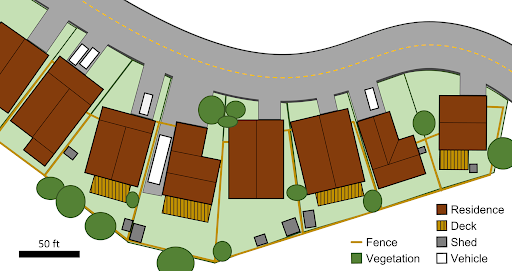Community-scale WUI Fire Hazards
Properties tightly spaced within a high-density community allow fire to spread easily.
Fuel agglomeration and the proximity of many fuels can become a significant fire hazard in moderate- and high-density communities. Short Structure Separation Distances (SSD) of 8 ft between residential structures, common in high-density communities, pose significant potential for structure-to-structure fire spread. The addition of parcel-level fuels (including fences, decks, sheds, wood piles, and parked vehicles) further contribute fire spread pathways enabling a single ignition to destroy a community. Controlling the spread of fire among homes within dense communities is difficult and can result in heavy losses to the community.

Created July 6, 2023, Updated August 28, 2023

